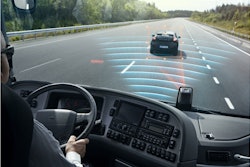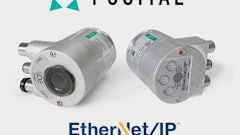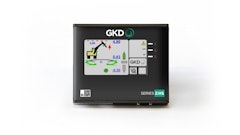Bendix Commercial Vehicle Systems LLC contributed insight at the second annual Piper Jaffray Technology-Enabled Trucks and Trucking Symposium, which focused on commercial vehicle industry trends and emerging technologies. Richard Beyer, Vice President, Engineering and R&D, and a member of the Bendix senior leadership team, joined other commercial vehicle industry leaders in offering expertise at the symposium’s “Trucks from the Future” panel.
Beyer contributed to the panel by discussing the importance of making effective use of the information that fleets can now access through onboard safety systems. The panel also talked about the future of autonomous vehicles.
The symposium took place November 18 in New York City and marks the second year Piper Jaffray has partnered with the North American Council for Freight Efficiency (NACFE). Piper Jaffray Companies is an investment bank and asset management firm headquartered in Minneapolis, MN.
“Safety systems today – from collision mitigation and full stability to lane departure warnings and tire pressure monitoring – generate an enormous amount of raw data that must be translated into actionable information before it can be used to improve highway safety or reduce significant cost,” Beyer says. “When that data is connected and managed through a back-office interface, like an easy-to-navigate website, fleet safety and risk managers can target potential areas of concern or reward for their fleets, routes, and drivers.”
Beyer notes that the website must also provide context around severe events or trends, so almost anyone can quickly understand them. While the J1939 data provide the “what” aspect of a severe event, video recorded by a safety system – such as lane departure warning technology, which utilizes a camera – can illustrate “why” the event occurred. Meaningful and contextually relevant data help fleet safety and risk managers take informed action, develop targeted ongoing driver training, and reinforce safe driving practices unique to the issues the data revealed.
He also adds that although active safety technologies are powerful tools, the importance of comprehensive driver training and alert drivers practicing safe driving habits cannot be understated. Most safety technologies – even autonomous systems – rely on engaged drivers; however, ultimate responsibility for control of the vehicle remains with the driver at all times.
“The commercial vehicle industry is ripe for automation, with the potential for fuel-saving opportunities and high demand for skilled drivers,” Beyer says. “But it’s a long and exciting road ahead to fully automated trucks. This symposium presents an excellent opportunity to explore how current trends will shape the future of commercial vehicles, and Bendix is glad to offer its perspective.”




















